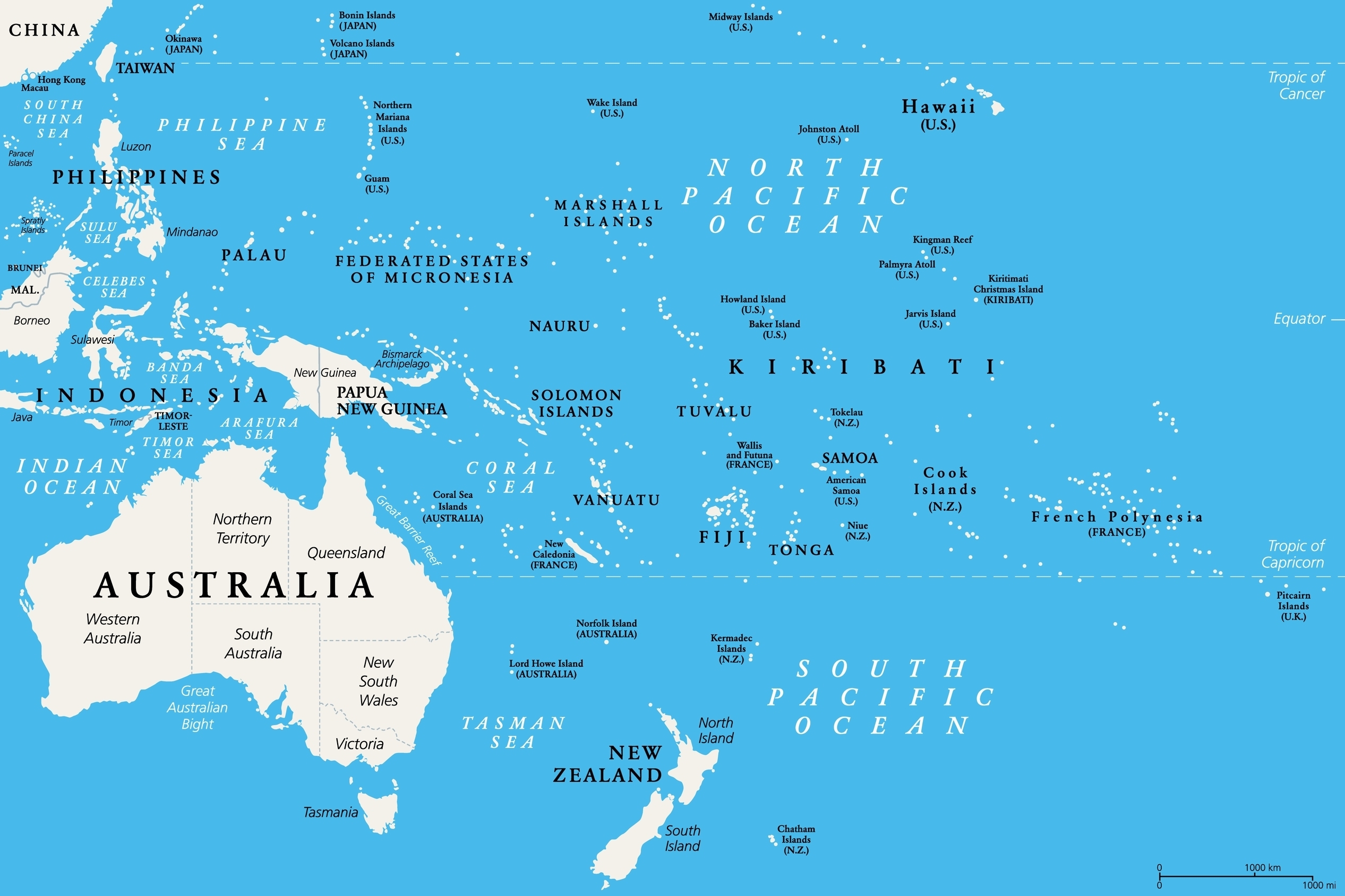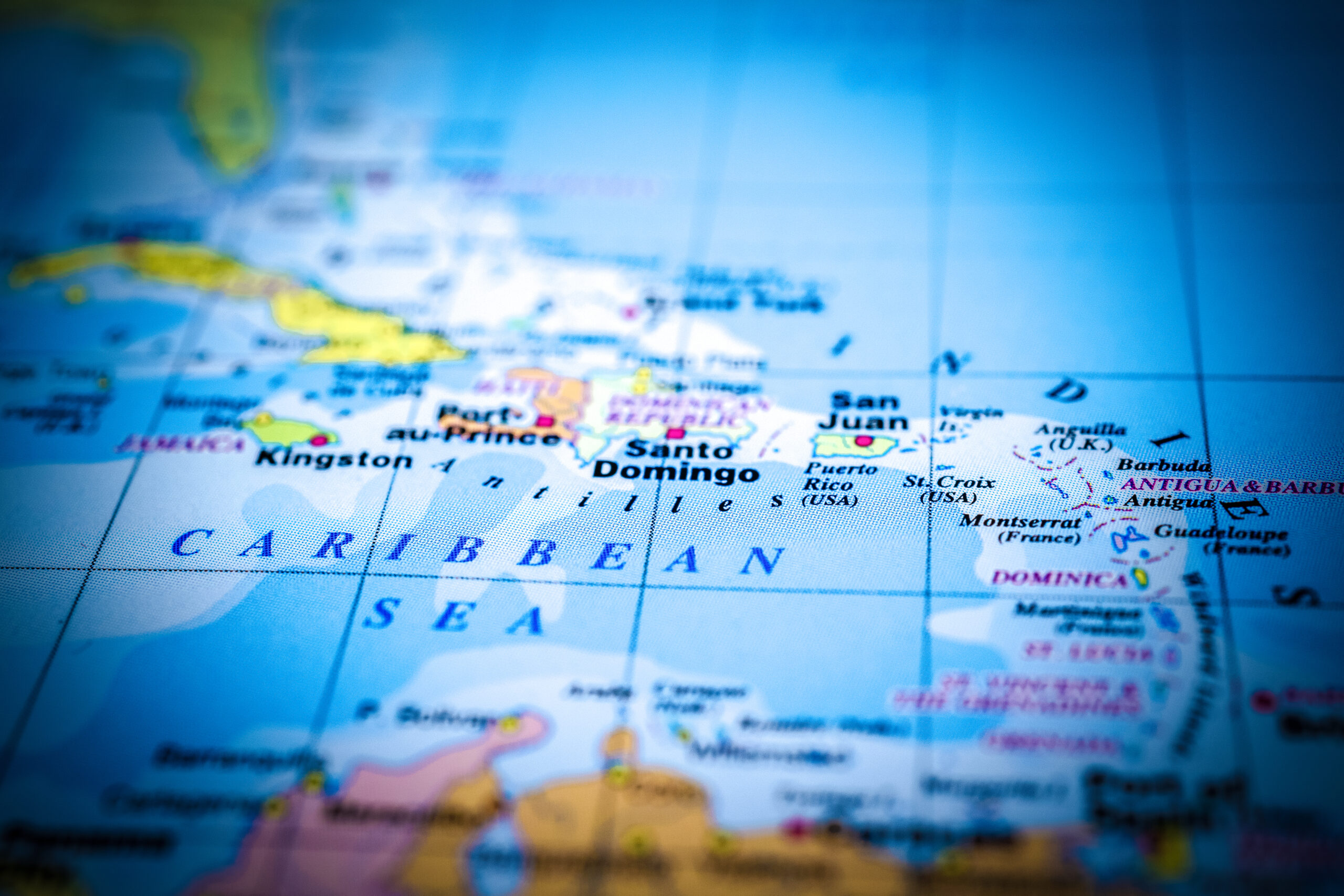The world’s oceans cover more than 70% of the Earth’s surface, holding a stunning variety of marine life, landscapes, and mysteries. These oceans don’t just define our planet’s geography but also play vital roles in climate, weather patterns, and the livelihoods of millions. Exploring these bodies of water reveals a fascinating world beneath the waves, full of unique characteristics. Let’s take a deeper look at some of the largest oceans that shape our planet.
Pacific Ocean

The Pacific Ocean is the largest ocean in the world, covering an area of about 63 million square miles, which is more than the total landmass of all continents combined. Its average depth is around 12,080 feet, with the Mariana Trench, its deepest point, plunging to an astonishing 36,000 feet. The Pacific’s vast coastline stretches approximately 84,300 miles, bordering countries from Asia, Oceania, and the Americas. The Pacific plays a central role in global weather patterns, including influencing the El Niño and La Niña phenomena. This immense body of water hosts countless islands and marine species, making it essential to marine biodiversity. Every corner of the Pacific has unique ecosystems, from vibrant coral reefs to deep ocean trenches.
Atlantic Ocean

The Atlantic Ocean ranks as the second-largest, spanning about 41 million square miles and featuring diverse marine ecosystems. Its average depth reaches 10,955 feet, while its deepest area, the Puerto Rico Trench, plunges down 27,841 feet. This ocean stretches along a coastline of roughly 69,510 miles, touching continents such as North America, South America, Europe, and Africa. The Atlantic has been central to trade, exploration, and historical voyages for centuries, connecting numerous cultures. The Gulf Stream, a powerful ocean current, plays a significant role in regulating temperatures across the Northern Hemisphere. The Atlantic is rich in marine resources and home to various fisheries that support millions of livelihoods.
Indian Ocean

The Indian Ocean covers approximately 27.2 million square miles, making it the third-largest ocean on the planet. It has an average depth of 12,274 feet, with its deepest point, the Java Trench, reaching down to 25,344 feet. The Indian Ocean’s coastline measures about 41,243 miles, bordering Asia, Africa, and Australia. Known for its warm waters, the Indian Ocean is home to unique marine life adapted to its tropical climate. This ocean is crucial for global trade, with some of the busiest shipping routes crossing its waters. The Indian Ocean monsoon influences weather patterns for millions in surrounding regions, impacting agriculture and fishing practices.
Southern (Antarctic) Ocean

The Southern Ocean, also called the Antarctic Ocean, spans around 7.8 million square miles, making it the fourth-largest ocean in the world. Its average depth is approximately 13,100 feet, with the South Sandwich Trench being its deepest point at 23,737 feet. Its coastline wraps around Antarctica, covering about 11,000 miles. The Southern Ocean plays a critical role in regulating Earth’s climate by helping circulate cold, nutrient-rich waters globally. Its cold waters are home to unique marine life, including whales, seals, and penguins, which thrive in this frigid environment. Known for its strong currents and icy waters, it contributes significantly to the global ocean conveyor belt.
Arctic Ocean

The Arctic Ocean is the smallest and shallowest of the world’s major oceans, covering roughly 5.4 million square miles. It has an average depth of about 3,953 feet, with its deepest area, the Eurasian Basin, reaching around 17,880 feet. Its coastline, measuring around 28,200 miles, touches North America, Europe, and Asia. The Arctic Ocean is characterized by its ice-covered waters, which shrink and expand with the seasons, playing a crucial role in global climate. Its unique ecosystem supports polar bears, walruses, and seals, along with small communities of people living along its shores. As the coldest ocean, it’s a fragile environment that faces increasing threats from climate change.
Philippine Sea

The Philippine Sea, considered part of the western Pacific Ocean, covers approximately 2 million square miles, making it one of the largest seas in the world. Its average depth reaches 13,773 feet, with the Philippine Trench, its deepest point, plunging to 34,580 feet. The sea has a coastline that connects several islands and nations, including the Philippines and Japan. Known for its diverse marine life and coral reefs, the Philippine Sea is a critical area for biodiversity, supporting species found nowhere else on Earth. This sea is also known for its complex system of currents and warm waters. Additionally, it plays a vital role in the Pacific’s tectonic activity, sitting near major fault lines and volcanic arcs.
Coral Sea

The Coral Sea, located off the northeastern coast of Australia, covers around 1.85 million square miles and is famous for housing the Great Barrier Reef. It has an average depth of 7,546 feet, with the New Hebrides Trench as its deepest point at 25,134 feet. This sea’s coastline mainly surrounds the Australian coast and various Pacific islands. Renowned for its vibrant coral reefs, especially the world’s largest, the Coral Sea supports one of the planet’s most diverse marine ecosystems. It has warm, clear waters that attract countless divers and tourists each year. The Coral Sea’s rich biodiversity and geological features make it a significant environmental and cultural area in the Pacific region.
Arabian Sea

The Arabian Sea spans an area of about 1.5 million square miles, stretching between the Arabian Peninsula and the Indian subcontinent. Its average depth is around 8,970 feet, while its deepest point, the Murray Ridge, plunges to about 15,262 feet. This sea boasts a coastline that borders countries like India, Oman, and Yemen, providing a crucial route for international trade. Rich in marine biodiversity, the Arabian Sea supports a variety of fish, coral reefs, and marine mammals. Known for its intense monsoon currents, the Arabian Sea has a significant impact on the climate of surrounding regions. It has long served as an important link for trade between the East and West, shaping the history and culture of nations along its shores.
South China Sea

The South China Sea covers an area of around 1.4 million square miles, bordered by China, Vietnam, Malaysia, and the Philippines. Its average depth reaches 4,429 feet, with the China Sea Basin marking the deepest point at approximately 16,457 feet. This sea has extensive coastlines with numerous islands and reefs, making it one of the most biodiverse areas in the world. Its warm, shallow waters are home to coral reefs and an abundance of fish species, supporting local fishing economies. Known for its strategic location, the South China Sea is a vital route for global trade and commerce. The region’s abundant natural resources and strategic value have made it a center of political and economic interest.
Caribbean Sea

The Caribbean Sea spans approximately 1.06 million square miles, lying between North and South America and surrounded by a chain of islands, including Cuba, Jamaica, and Puerto Rico. Its average depth is around 7,220 feet, while the Cayman Trough, the deepest point, reaches a staggering 25,217 feet. This sea is renowned for its clear blue waters, which support vibrant coral reefs and marine life. The Caribbean’s warm, tropical climate attracts millions of tourists each year, making it one of the world’s most popular travel destinations. Its coastlines provide vital ecosystems and economies for the island nations that depend on fishing and tourism. The Caribbean also plays a critical role in moderating regional weather and influencing hurricane activity.
Mediterranean Sea

The Mediterranean Sea, nestled between Europe, Asia, and Africa, spans about 970,000 square miles. It has an average depth of around 4,900 feet, with its deepest known point, the Calypso Deep, descending to 17,280 feet. The Mediterranean boasts an extensive coastline stretching over 28,600 miles, touching 22 countries. Its waters have supported human civilization for millennia, facilitating trade, culture, and exploration. Known for its diverse marine ecosystems, the Mediterranean is home to many unique species, despite pressures from pollution and overfishing. The warm, relatively shallow waters make it a favorite destination for tourists and maritime activities. With rich historical significance, the Mediterranean Sea continues to be a critical region in modern-day culture and trade.
Bering Sea

The Bering Sea covers an area of around 878,000 square miles between Alaska and Russia. Its average depth is 5,075 feet, with its deepest point, the Bowers Basin, reaching about 13,442 feet. The Bering Sea has a rugged, icy coastline that is home to diverse marine life, including seals, whales, and seabirds. This region supports some of the world’s richest fisheries, providing an essential source of seafood like crab and salmon. Known for its cold, nutrient-rich waters, the Bering Sea sustains unique ecosystems despite its harsh conditions. The sea’s proximity to the Arctic Circle also makes it a focal point for studies on climate change and its impact on marine environments.
Gulf of Mexico

The Gulf of Mexico spans roughly 600,000 square miles, bordered by the United States, Mexico, and Cuba. It has an average depth of around 5,299 feet, while the Sigsbee Deep, its deepest point, descends to about 14,383 feet. The Gulf’s coastline, extending over 3,500 miles, supports vibrant cities, industries, and ecosystems. Known for its warm waters, the Gulf of Mexico is rich in biodiversity, housing coral reefs, sea turtles, and marine mammals. The region is also essential for fishing, oil extraction, and tourism, contributing significantly to local economies. However, the Gulf faces environmental challenges, including hurricanes and the impacts of industrial activities.
Okhotsk Sea

The Okhotsk Sea, located between Russia and Japan, spans around 611,000 square miles. It has an average depth of about 2,818 feet, with its deepest point, the Kuril Basin, reaching approximately 11,063 feet. The Okhotsk’s coastline includes remote, rugged areas that experience severe winter ice cover, limiting navigation for part of the year. Known for its frigid waters, the sea supports cold-water species, such as salmon, crabs, and whales, making it essential for Russia’s fishing industry. The Okhotsk Sea is unique for its seasonal sea ice, which influences marine ecosystems and global weather patterns. Despite its remote location, it plays a significant role in the regional economy and biodiversity.
East China Sea

The East China Sea covers an area of about 482,000 square miles, bordered by China, Japan, and Taiwan. It has an average depth of around 1,145 feet, with the Okinawa Trough marking its deepest point at approximately 8,912 feet. Its coastline supports dense population centers and is crucial for fishing, tourism, and shipping industries. Known for its warm, shallow waters, the East China Sea sustains abundant marine life, including commercially valuable fish species. Its location makes it a vital area for international trade, connecting East Asia with other parts of the world. The East China Sea also holds geopolitical importance due to its natural resources and strategic location.
This article originally appeared on Rarest.org.
More from Rarest.org
20 Oldest Democracies in The World

Across the world, democracy has deep roots that stretch back centuries, shaping how societies are governed and how people’s voices are heard. Read More.
20 Classic Muscle Cars That Revolutionized the Auto Industry

Muscle cars have a special place in automotive history, known for their powerful engines, bold designs, and thrilling performance. Read More.
20 Unique Desert Animals That Defy the Harshest Climates

Deserts are some of the toughest places for animals to survive, with extreme temperatures, limited water, and scarce food. Read More.
